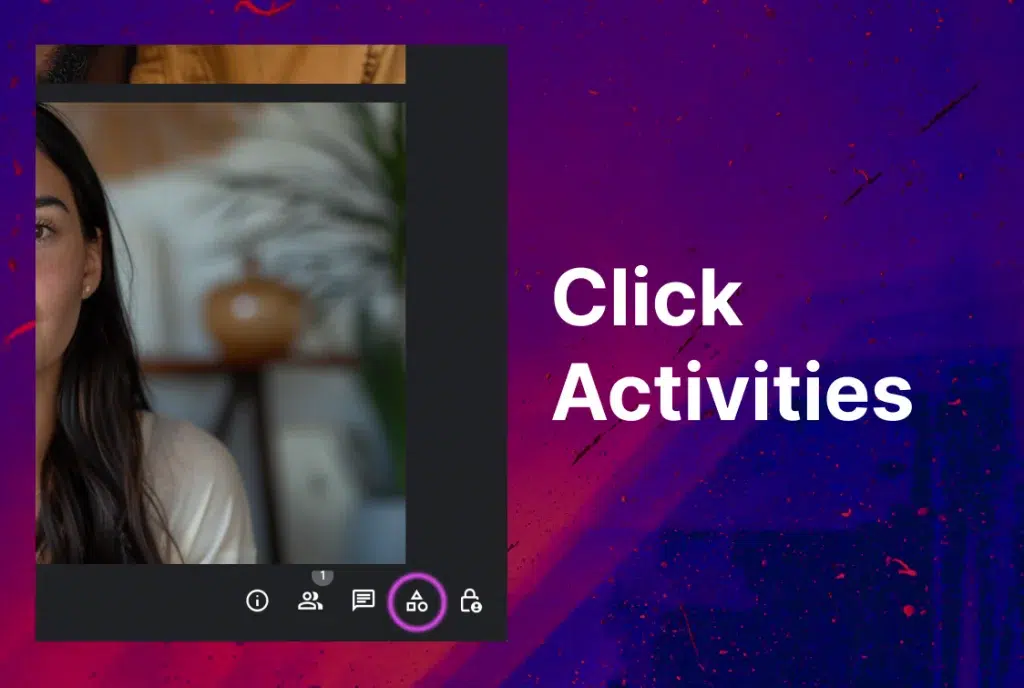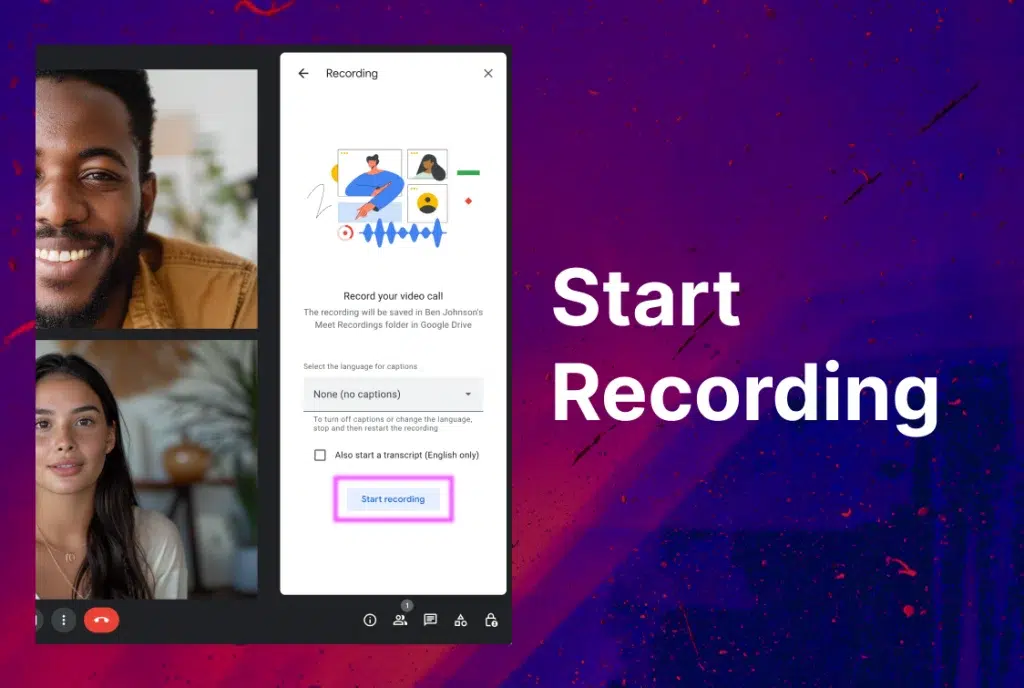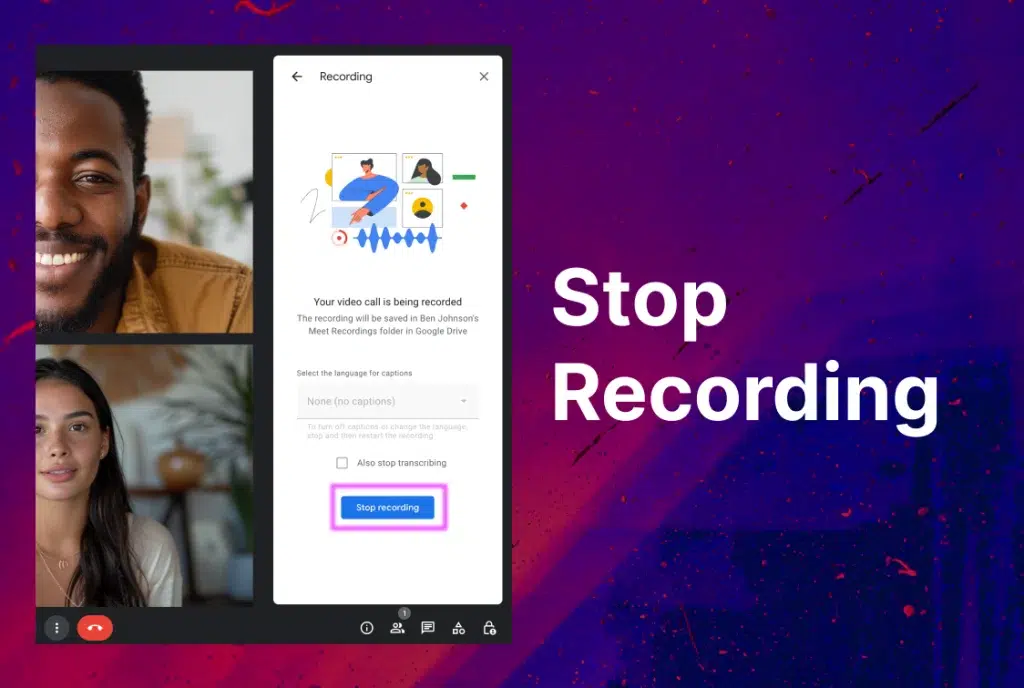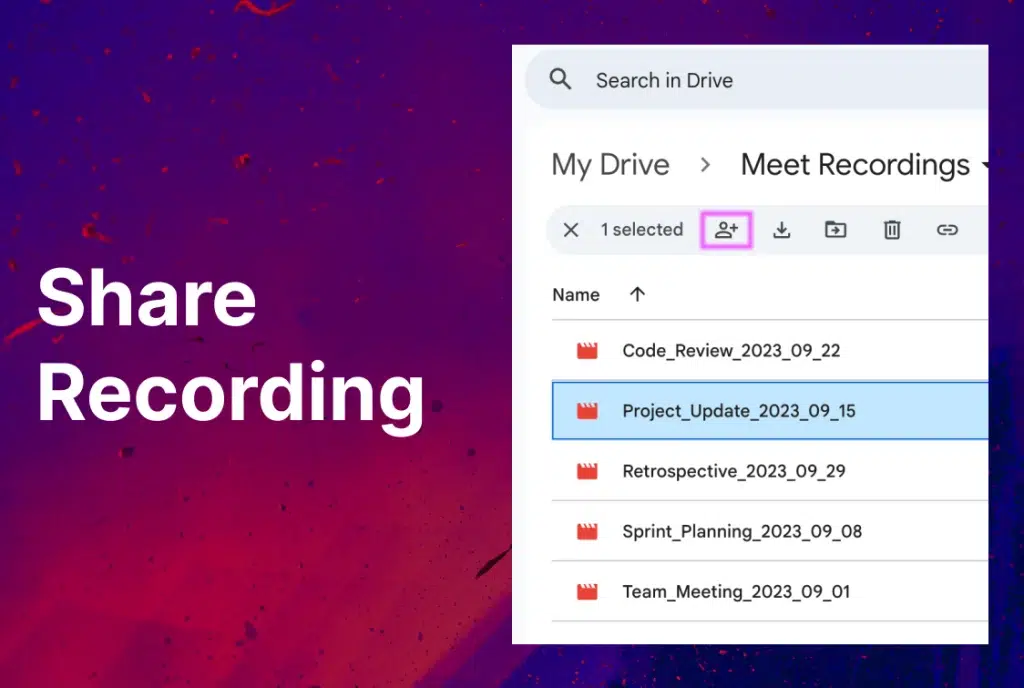How To Set Up and Find Your Google Meet Recording
Zoom might be the new shorthand for online meeting spaces, but it’s hardly the only game in town when you want to have a remote meeting. Google Meet is another prominent conferencing service, so it pays to know how to get the most out of it. Recording your meeting eliminates the need for pesky note-taking, and subsequently transcribing that recording can really streamline your workflow and enhance your team’s productivity.
If you don’t know how to record using Google Meet or how to find your recordings after they’re recorded, you’re in the right place.
Setting Up a Google Meet Recording
Before you start recording your Google Meet session, there’s one important thing you should know. Though Google Meet is available on both iOS and Android, you can only record your meeting if you’re using a laptop or desktop computer (more on this later).
You also can only record a Google Meet if you’re the host, or if the meeting organizer has made you a co-host. Once you have Google Meet up and running on your not-so-mobile device, here’s a step-by-step guide to recording your meeting.
Step 1: Start Your Meeting
This one is easy! With the application open, click “Start” or “Join.”
Step 2: Click Activities
In the bottom right corner of your screen, click the “Activities” icon which looks like three shapes stacked on top of one another.

Step 3: Start Recording
After clicking the “Activities” icon, a panel with a number of options will open to the right of your video. Click on “Recording,” which should be accompanied by an icon that looks like a video camera.

After you expand the “Recording” option, click “Start Recording” at the bottom of the panel.

Step 4: Continue Your Meeting
After you start recording, you should be all set. Every participant in the meeting will get a notification that the session is being recorded (which is a good indicator that the recording “worked”), and there will be an icon indicating that recording is in progress in the upper right of your screen.

Note that meetings can “only” be recorded for a maximum of eight hours. After those eight hours, your Google Meet recording will automatically end. Mercifully.
Step 5: Stop the Recording
Assuming you aren’t participating in an eight-hour marathon, you’ll want to manually stop recording at some point. To end your recording, you need to hit the “Activities” icon again and when the panel opens up, click “Recording” again, followed by “Stop Recording.”
You’ll also be given the option here to have Google create a transcript of the recording (although we recommend a certain other transcription service, if you know what we’re saying).

How to Find Google Meet Recordings
There are a number of ways to find your recording after you hit that “Stop Recording” button on Google Meet. Remember that the meeting organizer is the one who will receive the file, but hosts will also have access.
Here are the places to find your Google Meet recording:
- Your email: An email with the recording link is sent to the meeting organizer and the person who started the recording.
- Your Google Drive: If you’re the meeting organizer, the recording will be stored on your My Drive, in a folder called “Meet Recordings.” This is where the email link takes you and the host who started the recording, if they’re a different person.
Note that the recordings can take up to 24 hours to process, so if you don’t receive a notification instantly, don’t panic!
Sharing Your Recording
Sharing your Google Meet recording is even easier than recording your Google Meet in the first place. All you have to do is highlight the file in your Google Drive and click the “Share” icon, which looks like this:

After clicking the icon, type the email of the person you want to share your recording with.
The other way to share your recording is to copy the link and paste it into an email or chat window.
Other Ways to Record Your Next Google Meet
If you’re not happy with Google Meet’s inherent recording option, which is easy but also incredibly basic, you have a number of other ways to get your Google Meet recorded.
Via a Third-Party App
Choosing a third-party AI meeting assistant is the best way to record your meeting in the exact way you need it recorded. Some AI assistants will even attend a meeting in your place! Every meeting assistant is different, so finding one with the options that best suits your needs is important.
Here are a few good ones to get you started:
- Fathom is a free meeting assistant that records, transcribes, highlights, and summarizes your meeting.
- Fireflies.ai specializes in meeting summaries and meeting analysis.
- Avoma analyzes conversation recordings and offers insights.
- VoiceHub automatically records, transcribes, and offers deep insights for all your meetings.
Screen Recording
If you don’t want to download a third-party app and you’re not happy with the Google Meets features, you can always record your screen during a Google Meet. This is especially helpful for recording a Google Meet on your phone, since the inherent recording option isn’t available on mobile.
Macs, as well as Android and iOS devices, have a built-in screen recorder but for Windows computers, you’ll have to download a third-party version. You can also do this on your other devices if you’re not happy with the built-in screen recorder. Loom and Vimeo offer great free screen recorders.
One thing to note when screen recording a Google Meet on your phone. Some states have laws for recording phone calls, so make sure you’re in line with what’s legal. In nearly every case, as long as all parties involved know they’re being recorded, you’ll be ok.
Why Can’t I Record on Google Meet?
If you’re having trouble recording a Google Meet on your computer, it’s likely one of these reasons:
- The admin or the meeting organizer turned off the recording option.
- You’re on a mobile device.
- Your Google Drive is disabled.
- You’re in a breakout room that doesn’t support recording.
Why Hitting “Record” Matters
Recording your Google Meeting is, quite simply, one of the smartest and easiest ways to increase productivity for you and your team. Here are a few benefits to recording meetings:
1. It Streamlines Note-Taking
By recording your Google Meeting, you nearly eliminate the need for thorough note-taking, because you can easily get your Google Meet transcribed. This allows everyone in the meeting to focus on the topics at hand as opposed to furiously scribbling notes can add hours back to your day.
Transcriptions of your Google Meets (through us) are easily searchable for keywords and important topics, too. No need to scrub through hours of video to find what you need when you have a transcription that is time-stamped and includes speaker identifications. And, you can use the transcription to easily add captions to the recorded Google Meet video for any future viewers.
2. It Helps Preserve Your Important Conversations
There’s nothing worse than half-remembering a tidbit of conversation from a meeting and having nothing concrete to circle back to. By recording your Google Meet, there will always be a record of your conversations, asides, “put a pin in it” notes and other important information.
3. Recordings and AI Make Great Partners
Pair your recording with AI, and the possibilities are limitless. Our new product VoiceHub, for example, can help turn your recorded meetings into actionable next steps, or even pull out insights, highlights, and themes for further analyzation. We make it easy to get more out of every meeting, and if you’re a VoiceHub customer, all you have to do is press “record.”
Recording Google Meet Is Only the Beginning
Now that you know how to record Google Meet on laptop or phone, you should make sure to get the most out of that recording with thorough transcription. Rev is one of the best apps to record and transcribe meetings.
We offer a number of options, from instant “draft” transcriptions to thorough AI transcription to human transcriptions that are 99% accurate. Turning that Google Meet recording into text can amp up your team’s productivity, so what are you waiting for? Sign up for VoiceHub now.
Subscribe to The Rev Blog
Sign up to get Rev content delivered straight to your inbox.



